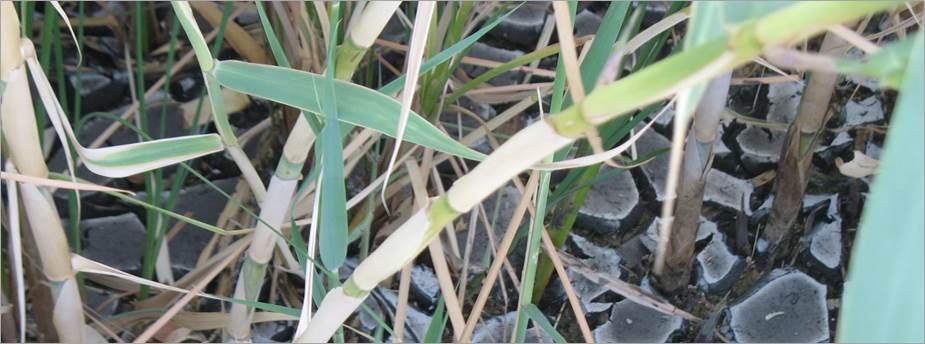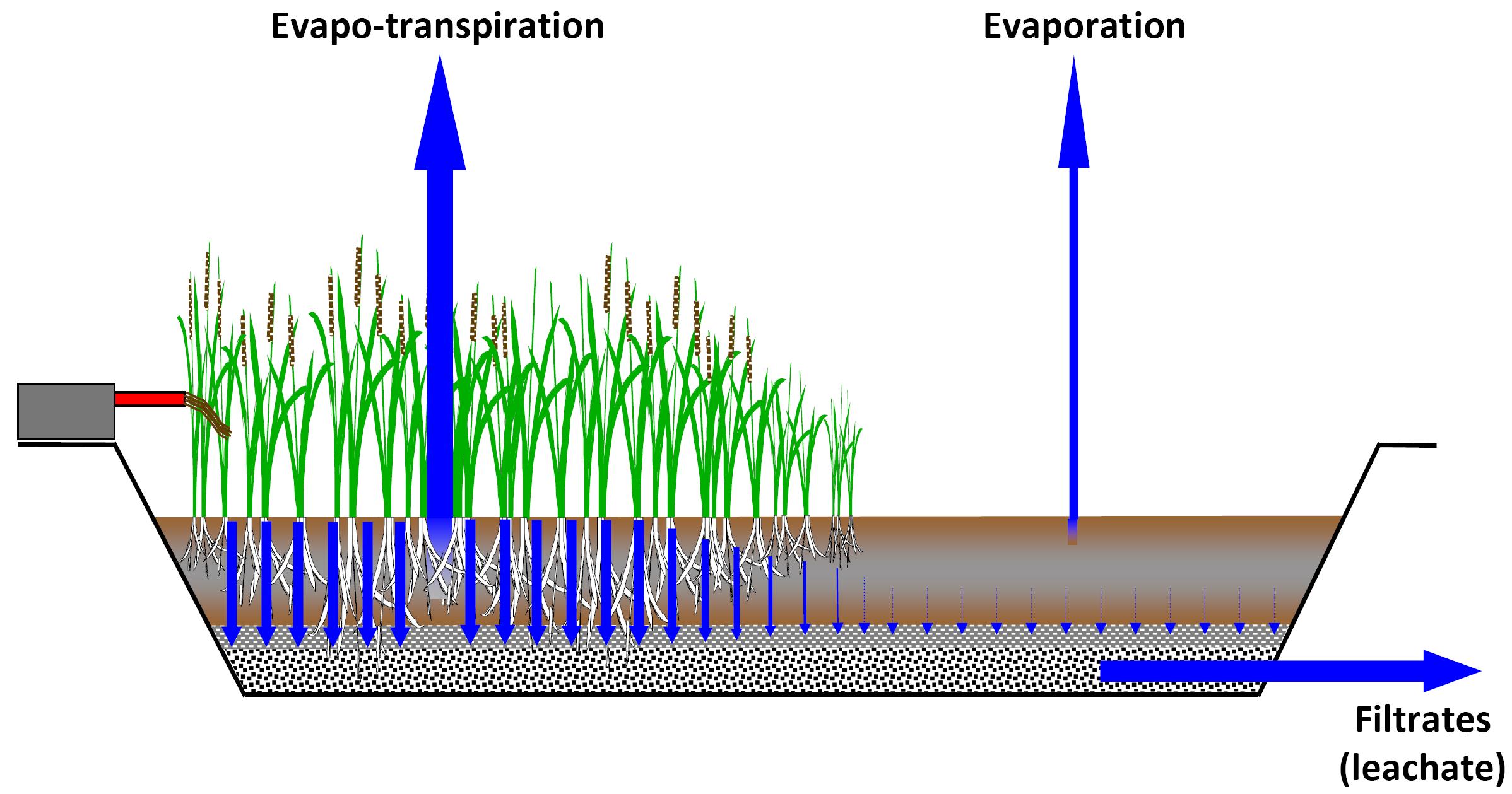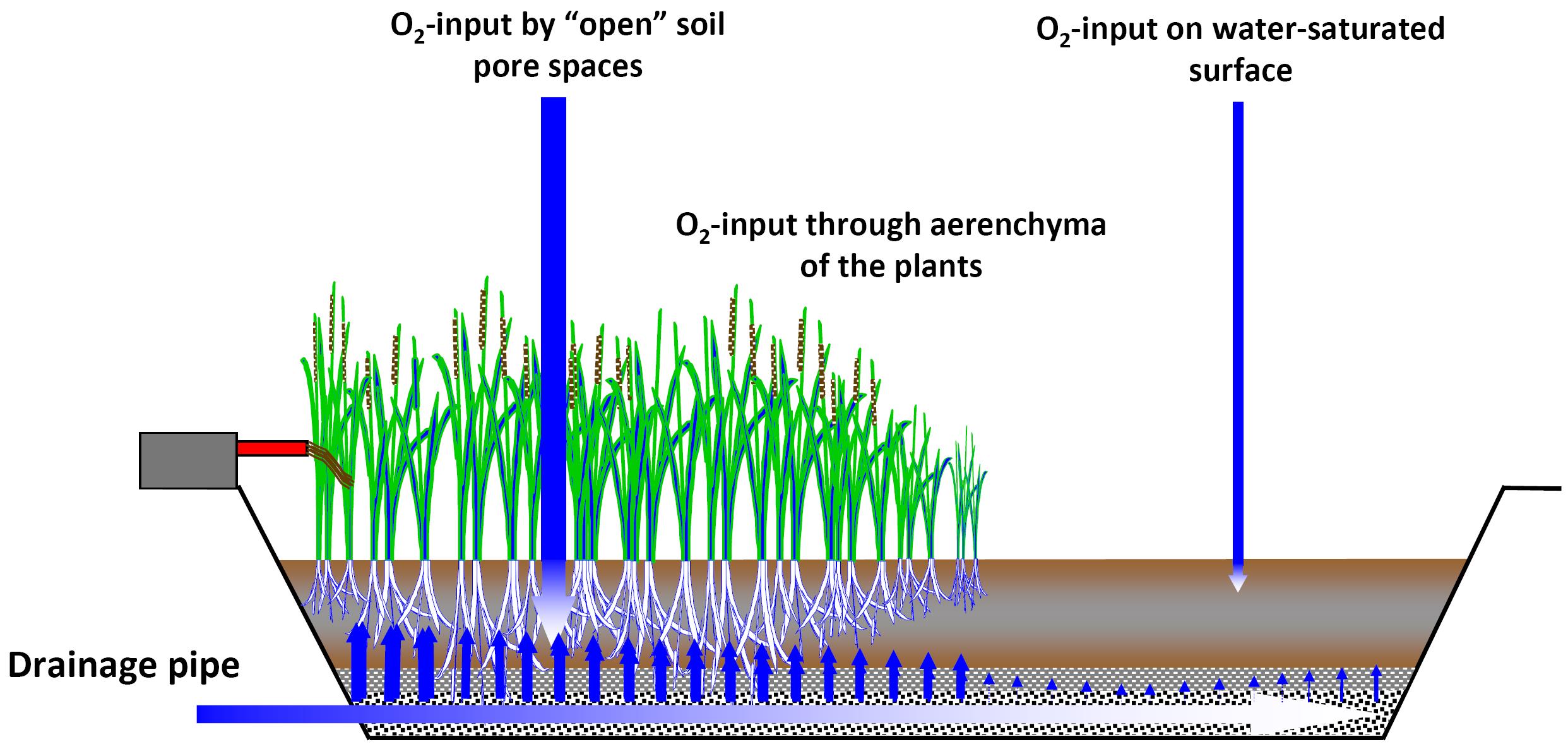
Ecotechnological Treatment of Sewage Sludge
Sludge Drying and Conditioning in Reed Beds
Sustainable sewage sludge treatment is becoming a growing economic and environmental challenge in many regions around the world
Sludge drying reed beds (SDRBs) could represent a simple and cost-effective ecotechnology for sludge management. Our research work aims to investigate the dewatering and sludge stabilization efficiency of SDRBs and to adapt the technology to the climatic conditions of arid/semi-arid regions for the production of high quality dried biosolids, which can be re-used as organic soil amendment.
SDRB technologies offer high flexibility and require minimal energy input
SDRBs are beds with impermeable bottom layers which are planted with Phragmites australis. Compared to conventional unplanted sludge drying beds, which need to be excavated on a regular basis before fresh sludge application, the planted beds can be filled up with intermittent sludge loadings without any sludge excavation over a long period of time (e.g. 5-10 years).
The systems consist of several beds that are alternately fed with a homogeneous distribution of sludge over the surface. The multi-bed approach allows sufficient rest periods for dewatering and progressive mineralization of the sludge deposit as well as the continuing of sludge treatment during the excavation and regeneration phase of single beds. Drainage pipes are incorporated in the bottom of the beds to enhance the dewatering of the sludge. The leachate can be then treated further for reuse or directly pumped back to the wastewater treatment plant (WWTP).
Sewage sludge conditioning in SDRB is mainly based on biological processes
The interconnected mechanisms and reactions that are taking place in the SDRB are:(i) dewatering by percolation and evapotranspiration; (ii) oxygen transfer by diffusion via the pore system of the medium and the aerenchyma of the plants and; (iii) metabolic stabilization by microbial processes.
The plants play a key role in SDRB systems due to: (i) evapotranspiration, which decreases even water with high osmotic potentials also from the lower sludge layers; (ii) complex plant root systems, which aggregate the medium and thereby build up porosity and drainage pathways; (iii) transfer of oxygen that assist the biochemical activation of the microbial population in the root zone, aerobic biological mineralization and stabilization and; (iv) production of plant biomass as material and energy resources.

Schematic of sludge dewatering in SDRBs with and without reed growth

Schematic of oxygen transfer in sludge drying beds with and without reed growth
Research and Development Work
Effects of sludge loading rate and plant-root growth on sludge dewatering efficiency as well as the hygienic quality of the leachate and accumulated biosolids are highlights of our research work in pilot scale systems. The reuse of the conditioned biosolids as a potential nutrient-rich soil amendment for agriculture is also one of the main focuses of our studies. For deriving the necessary design criteria for a full-scale implementation of the SDRB technology, we are evaluating the technical components of each process unit. The suggested solutions will be comparatively evaluated not only by technological criteria but also by analyzing the economic and social viability. The results of these investigations will be used to assess the overall potential of the SDRB ecotechnology as a sludge treatment solution for arid/semi-arid regions. Within the framework of the IWRM-SMART-project, we are carrying out these research activities at the ‘demonstration and research’ site adjacent to the Fuheis WWTP near Amman in Jordan.
Funding
BMBF SMART - Sustainable Management of Available Water Resources with Innovative Technologies
